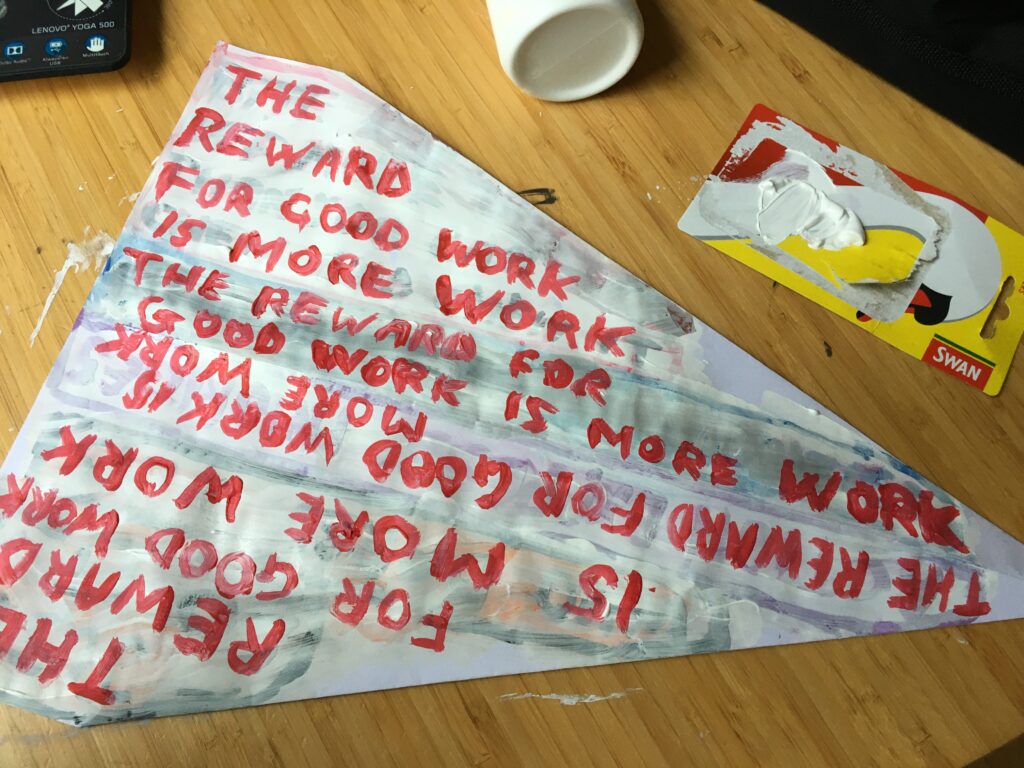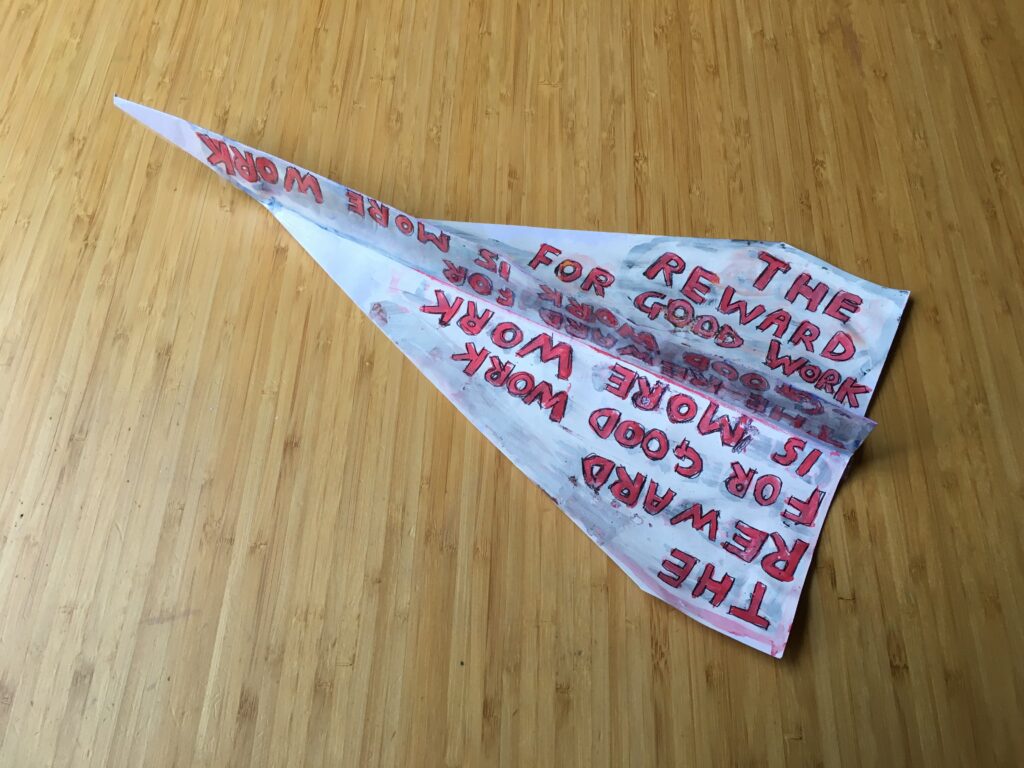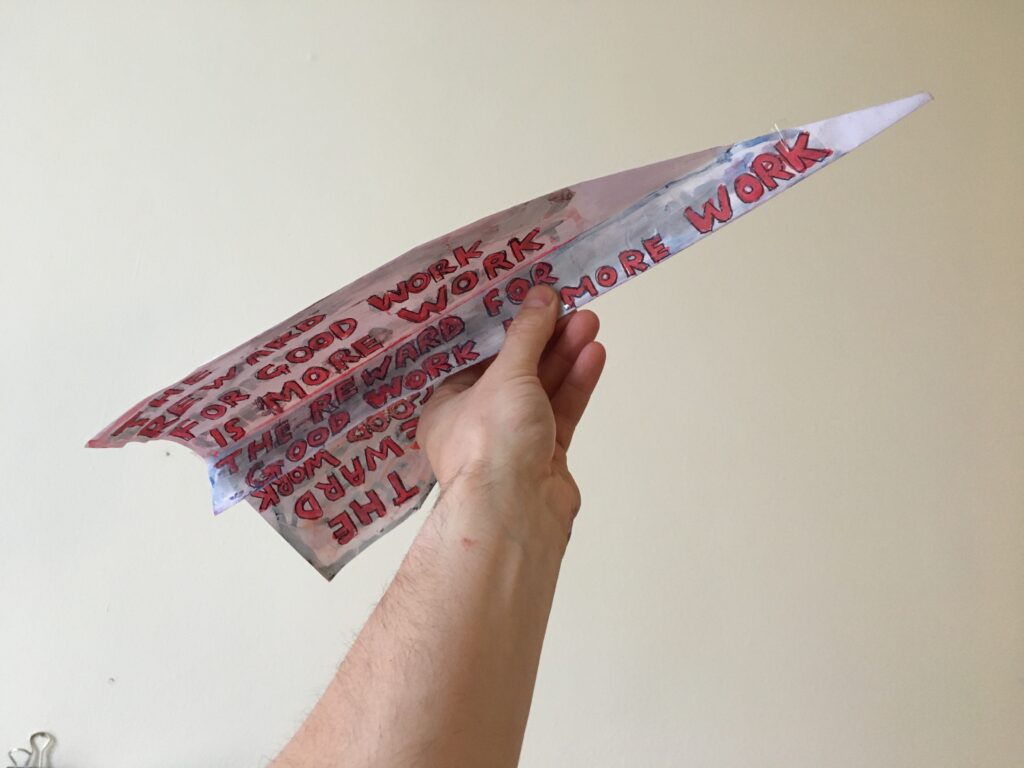The art assignment I chose to do for last week’s learning module was taken from Paul Thek’s Teaching Notes (1978-81). From the wide range of questions and suggestions that comprise the document, I chose what I thought would be a fairly straightforward task: make a large folded-paper airplane, paint on it a slogan which you think will revolutionize your life. The full list of Thek’s Teaching Notes, as well as many other art assignments and related materials, can be found on the Draw It With Your Eyes Closed website.
The paper airplane assignment seemed to be very simple but actually became quite involved. First of all I could not decide on what size to make the plane, as “large” is not a very specific instruction – in the end I made the plane out of a single A3 sheet of paper, as taping together multiple sheets might have overcomplicated the plane (both practically and conceptually – turning it more into a “sculpture”).
When it came to the slogan, I first chose a number of generic motivational phrases (actions express priorities; just do it; bite off more than you can chew and chew it etc.) which I painted to cover the whole underside of the plane. However, once I finished this I decided that using multiple different phrases was somehow against the spirit of the assignment, so I painted over this first attempt and re-did the plane with just one phrase repeated over the underside. The phrase I chose – the reward for good work is more work – is one that occurs frequently in the written work and interviews of American sculptor Tom Sachs, where he uses it as a kind of mantra to describe his approach to studio practice.
It was interesting to me that despite the simple instruction of the assignment, it somehow became more and more involved, and in the end I found that I was approaching the work as if it was a painting rather than a decorated paper plane. This is likely due to my regular use of painted text and phrases in my own work, and my usual approach to painting which involves a lot of improvisation and reworking of both the content and the material surface.
I feel like it is quite difficult to relate this assignment to any of the three learning theories outlined in the week 4 learning module, as it seems like quite an isolated action set apart from a broader learning context. However, I have tried to make some tentative connections to the learning theories below.
From a social constructivist perspective, the assignment could be interpreted as a form of “scaffolding” which could then be used to support learning. This is because I feel that any given instructions necessarily frame the actions that follow, so one way or another the instructions “frame” or “scaffold” a process – though whether this would be a “learning” process, or something else, I am not sure.
I cannot see any direct link to the theory of critical pedagogy in this assignment, as the action itself is almost entirely divorced from any social interaction (except perhaps the “interaction” between the artist and myself, mediated via the instructions). I also cannot see how this assignment could lead to any radical “reworking” of culture or of learning – unless it was adapted to involve many participants, in a more deliberately critical way.
Similarly, I do not think that the assignment much relates to the theory of connectivism – unless you could argue somehow that myself and the artist are now “connected” by this work – which I do not think is the case.
In conclusion, I think that this particular assignment relates more to the theory of social constructivism than to any of the other theories, but only in the sense that the instructions “scaffold” the production of an outcome. All three learning theories assume that some sort of social or group interaction is involved in the learning process – something which seemed entirely absent from the assignment itself.









One thought on “Art Assignment”